Sustainable fashion consumption isn't a new thing!
I enrolled in the Fashion Futures MA hoping to discover innovative new routes to sustainability but realised that we already have all the tools we need to build sustainable wardrobes if we want to...
The stats are shocking! In the UK we buy more clothes per person than any other European country and research by ReLondon reveals that in 2019 the average Londoner bought 48 new items of clothing and discarded (binned or donated to charity) 44 items of clothing. Plus, those numbers don’t even include secondhand purchases or garments that were resold - so they could be even higher?
I was one of those people! In 2019, including shoes and bags, I bought a shocking 55 new things to wear. I know this because I’d been tracking my purchases since 2016 in an attempt to control what I feared was becoming a shopping addiction. That’s why I started The Elephant in my Wardrobe in 2020 - to explore ideas around sustainable consumption and rebase my relationship with fashion.
The conversations started on Instagram led me to give up my career as a creative director, rediscover my love of studying, become obsessed with the secondhand fashion market and complete the Fashion Futures MA at London College of Fashion.
What did I learn?
Fashion Futures sounds high tech, doesn’t it? I think lots of my cohort signed up to learn about digital fashion, gain valuable CLO|3D skills, try 3D printing or VR technology, dress avatars and explore the possibilities of AI. I enjoyed the chance to explore new technology and I do think digital prototyping will revolutionise the fashion industry’s wasteful design and sampling processes. But, other than that, I am unsure how new technology will make fashion more sustainable.
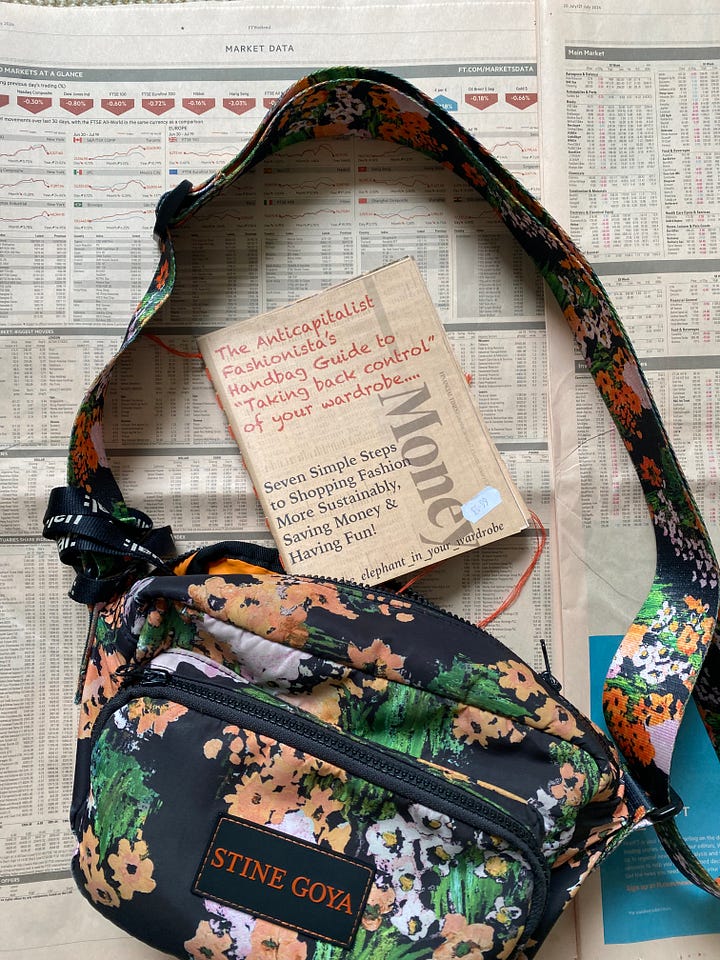
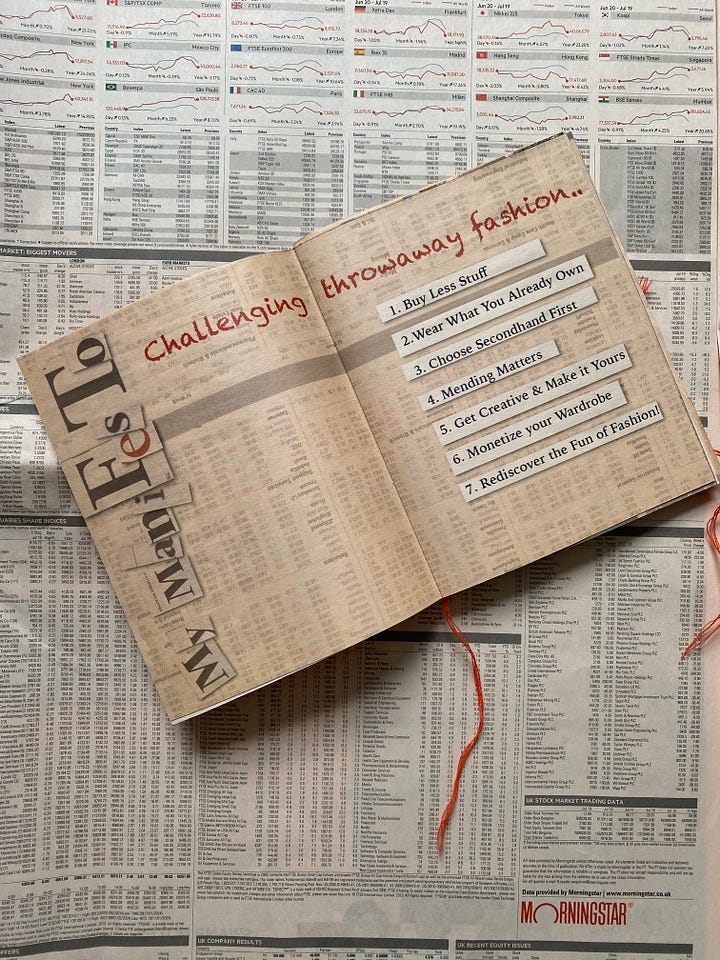
Instead I believe we already have everything we need to have a more sustainable wardrobes. That’s why I created this student manifesto outlining six simple steps to becoming a conscious consumer and reducing your environmental impact, while saving money and enjoying fashion more.
I chose the Financial Times as the backdrop for my work because I worry big businesses have hijacked fashion and turned clothes into a commercial commodity that we’ve been trained to need, consume and throwaway like takeaway coffees.
(However, I should add that the FT Weekend is my newspaper of choice. I started reading the FT on business trips because the men in suits I worked for expected me to pick up a women’s magazine and I wanted to challenge their assumptions! But over time I’ve come to appreciate the different perspectives it gives me.)
1. Buy less new stuff
The fashion industry is currently responsible for 10% of global carbon emissions and in his book, “What We Need to do Now for a Zero Carbon Future,” Chris Goodall says that without radical changes the fashion industry alone will stop us reaching net zero by 2050.
To stay in line with the targets set in the Paris Climate Accord the fashion industry needs to halve its emissions by 2030. As almost 80% of a garments carbon footprint happens during the production of fibres, raw materials and finished garments the only effective way to reduce fashion’s environmental impact is producing fewer new clothes.
The truth is you can’t shop your way to sustainability. The most sustainable clothes really are the ones you already own. Recent research by Leeds University and Arup suggests that if people only bought 8 new clothing items a year it would reduce fashion’s emissions in major cities around the world by a massive 37%.
Does buying just 8 new things sound impossible? Four years ago I might have thought that too. But since 2019 I have reduced my fashion consumption from 55 items to just 12 in 2023, and only three of them were new. Here’s how…
2. Take stock of what’s already in your wardrobe
This is important. The average wardrobe in the UK contains 118 garments, about a quarter of which haven’t been worn in the last year. If you want to reduce your fashion consumption, the first thing to do is take stock of the clothes you already own.
Tidy up. Count up! Organise your wardrobe and then start tracking what you wear. I know that might sound painful but, if you can understand why some clothes are the firm favourites you always reach for, then you can start to make more considered purchasing decisions.
This process of taking stock helped me realise that I’m drawn to impractical clothes for a fantasy life I don’t have and a person I’ll never be. Do you do that? These are the clothes languish unworn in my wardrobe and I’m learning to resist their allure.
I’ve learnt that being a conscious consumer is all about asking questions. When I feel the urge to buy something new, I start by asking myself whether I already own something that will do the job. If the answer is no - then I ask myself if I really need it? If I really love it? Will I wear it lots in my real life now? Will I still love it in five years time? Ten years time? Is it even made well enough to last for ten years?
If all those answers are yes, then I ask more questions! What’s it made of? Who made it? Where? And how do these answers sit with my values. If I still want to buy it then the next step is…
3. Try to buy secondhand first
Why? Because shopping secondhand instead of buying new is a great way to reduce your personal carbon footprint. Plus the exponential growth of the fashion industry this century has had a direct impact on the choice and availability of secondhand clothes - there is lots to choose from.
I’ve been tracking the number of Zara items for sale on Vinted this year and it has increased from 52.4 million items in March to 64.7 million items today (26.07.24). Checking on Vinted while writing this I found 31.3 million items tagged Nike, 21.3 million items tagged Adidas, 6.9 million items tagged Ralph Lauren, 6.8 million items tagged Levi’s, 1.6 million items tagged Carhartt, 907k items tagged Burberry, 78.9k items tagged Acne and even 16.8k items tagged Dries Van Noten.
That’s why I believe it is possible to find anything you want secondhand if you’re patient, persistent and a fairly standard size. I know secondhand shopping is not always easy! If you really do need a blue striped shirt in a specific size to wear to work tomorrow then secondhand shopping may not be for you. But if you can wait, and have the time to shop around, you can probably find a beautifully crafted vintage striped shirt for a fraction of the price of current high street versions.
And if it does take a while to find the one piece you really want - that may be a good thing? I’ve discovered that there is real pleasure and satisfaction in hunting down the perfect secondhand piece. Perhaps that’s why Wrap research suggests we keep wearing clothes we buy secondhand for longer than the clothes we purchase new.
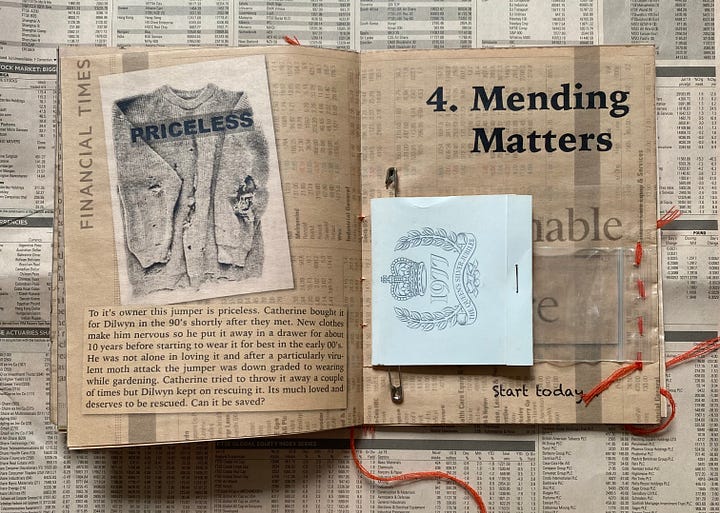
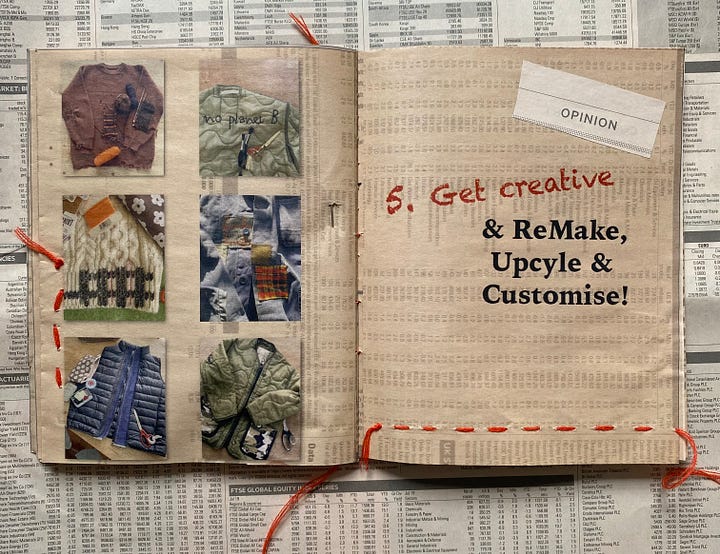
4. & 5. Hone your sewing skills
I know this is not for everyone. I’m lucky that my mum taught me how to sew. But, before I started The Elephant in my Wardrobe, I hadn’t sewn anything for over twenty years and my sewing skills were very rusty.
Over the last four years through online tutorials, and the lovely book “This Mending Life - A Handbook for Repairing Clothes and Hearts,” I’ve slowly taught myself rudimentary darning, sashiko patching and hand embroidery techniques, using them to mend trainers, jeans, jackets and jumpers for myself, and for friends.
At times learning to mend has been frustrating and it is time consuming - on average I unpick things several times before I’m satisfied with my work. But I’ve come to love the way taking time to repair clothes forces me to look at them in a different way - highlighting small details I wouldn’t normally notice and revealing their histories.
Research by Wrap suggests that repairs add over a year onto a garments life. Typing this I wonder, is that because we only repair the clothes we care about or because the act of repairing them is what makes us love them? What do you think?
(P.S. If you don’t want to learn to sew - there are lots of people and services who can repair your clothes for you and I’m happy to share contacts)
6. Extend the worn life of clothes
When I wrote this manifesto eighteen months ago I hoped the growing resale market might be the answer to fashions sustainability problems as a way to embed circularity and extend the worn life of clothes. Now I’m less sure.
I now worry that the ability to easily resell our clothes, or donate them to charities, is encouraging us to feel good about buying new clothes we know we probably won’t want next month, or next year, and that have little or no resale or reuse potential.
And the big problem is that the growing resale market won’t make the fashion industry more sustainable unless secondhand shopping starts to replace new purchases - reducing the 80-150 billion new apparel items that are being produced every year.
To build a sustainable fashion future we do need to keep our old clothes in circulation but resale isn’t the only way to do this. There are other options like donating to projects like Give Your Best or Smartworks, or swapping unwanted clothes at events like the ones run by Verte, Loanhood or The Big Swap Events or even sharing your wardrobe through peer to peer rental options like By Rotation.
Other tips…
Over the last four years I’ve learned that swimming against the consumerist tide of targeted marketing and constant discounting and trying to buy less is not easy. I’ve had to unsubscribe from marketing emails, fashion influencers who constantly promote new trends and to avoid temptations like visits to Portobello Road or Brick Lane.
I’ve found that joining “no buy” challenges on instagram help me maintain momentum and gradually the ‘cravings’ for something new are starting to dissipate.
Thank you for reading this. I’m here on Substack to learn and I’d love to hear from you - particularly if you’ve got any tips for reducing consumption or choosing secondhand first.



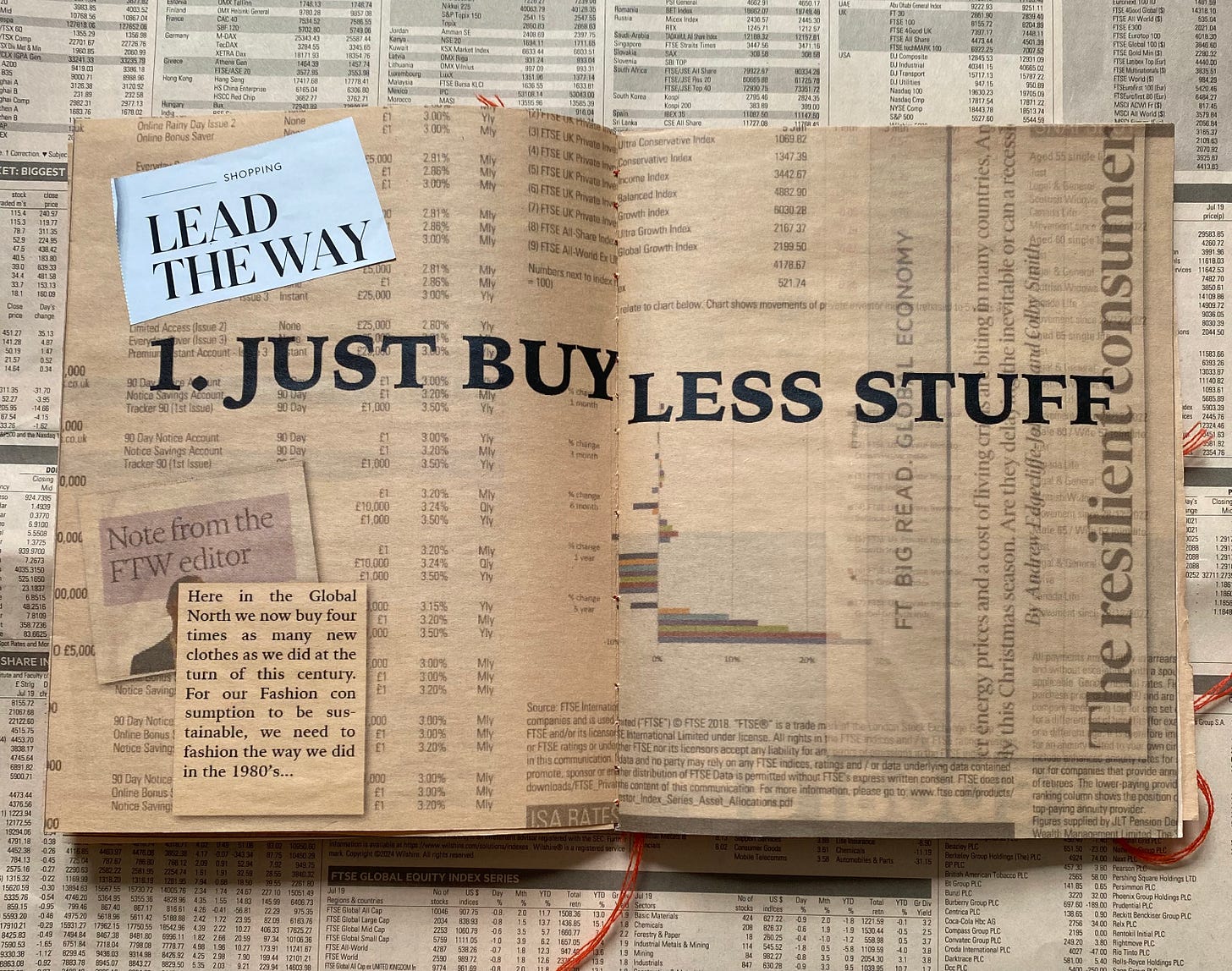
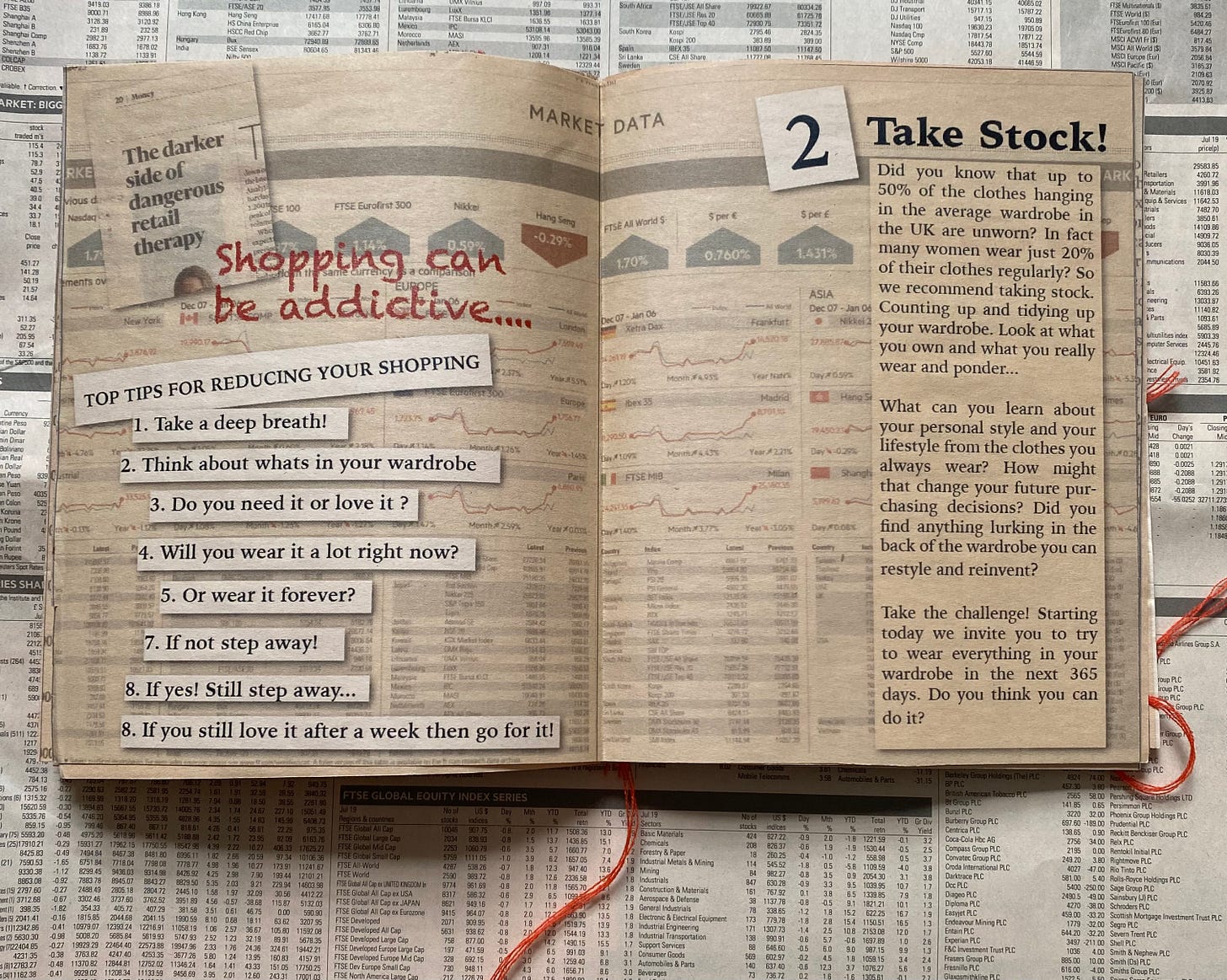
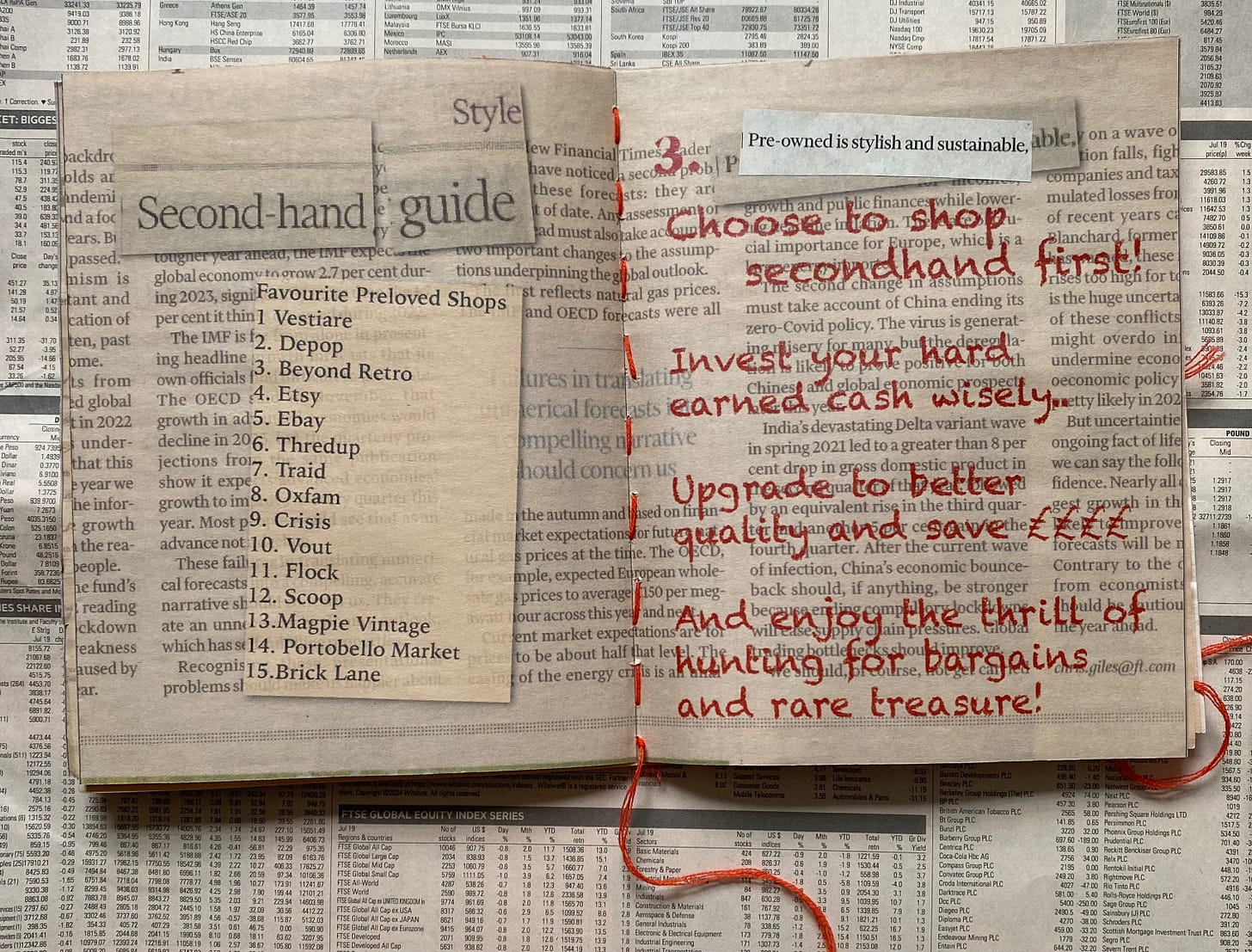
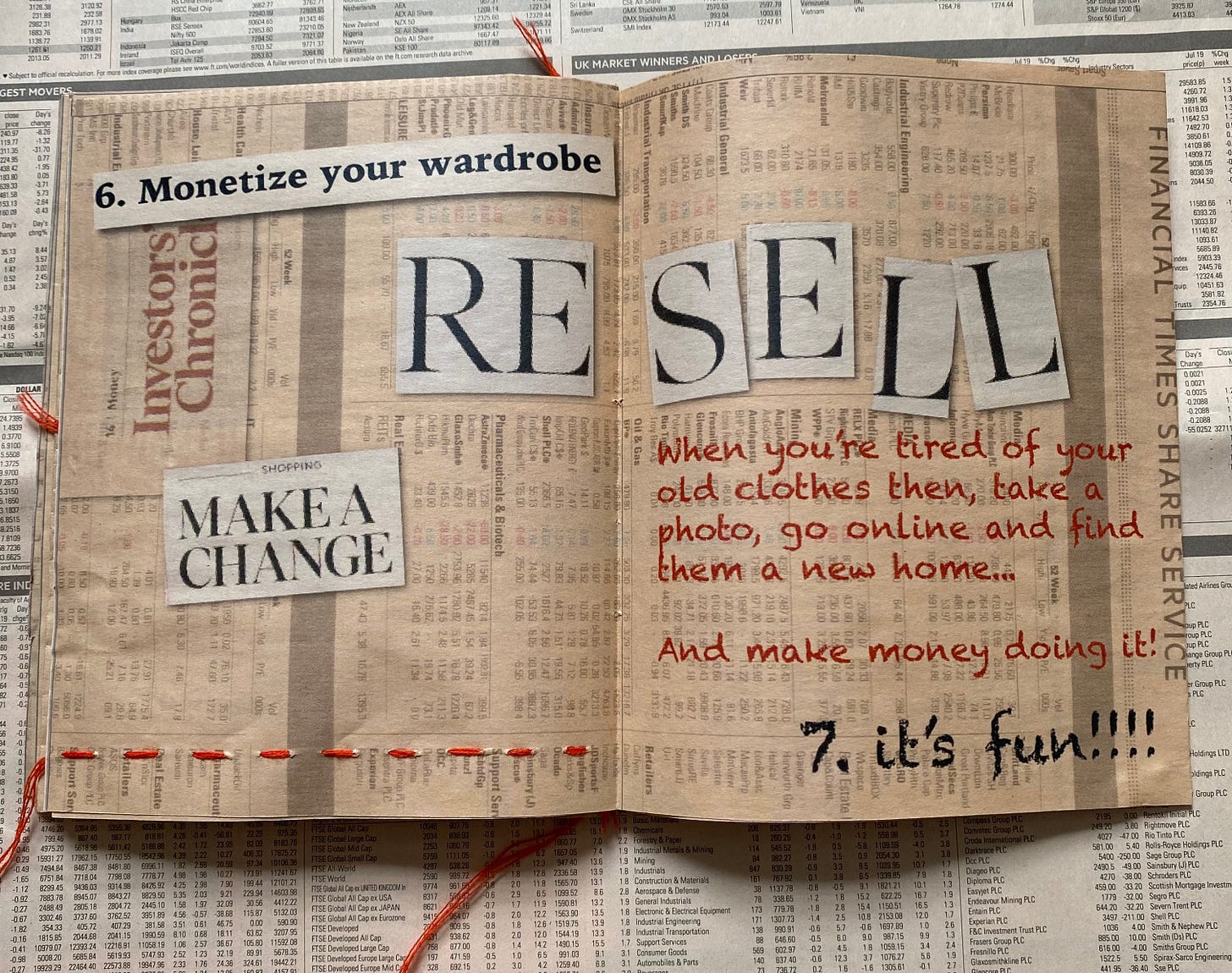
Loved this! My fave secondhand option at the moment is Thrift+, partly because they do the selling work (photos etc) for you but also because anything you do sell is converted into credit to reuse with them on more secondhand clothes OR can be donated to charity. I’ve found them a really easy way to have a clear out/ pick up a few great pieces secondhand that have been on my list as gaps in my wardrobe.
Excellent Gemma. It was great to read about your research. Looking forward to hearing about where you go from here. Keep up the good work, we need you!